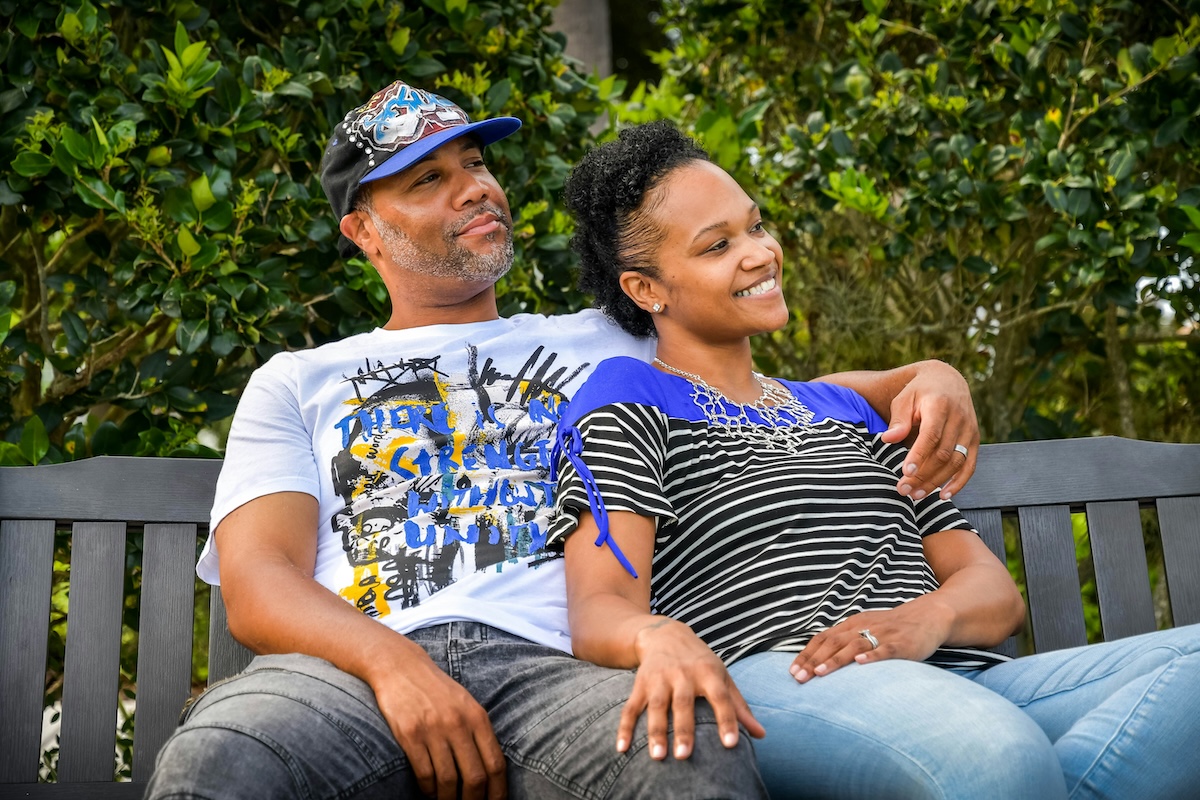When you are sleep-deprived, covered in milk, and just getting into a groove of caring for a newborn, reaching the six-week “all clear” to return to sex may be the last thing on your mind. Or perhaps you are mentally and emotionally ready, but is your body?
Waiting six weeks to have vaginal intercourse is the standard medical recommendation, thought to derive from the time it takes for the uterus to shrink back to its pre-pregnancy size. While the risks of infection and bleeding decrease after the first two weeks postpartum, the birth experience can influence when moms feel physically ready to return to sex. Six weeks is also the standard time frame for an initial postpartum visit with a medical provider, who can ensure that your tissues are healed and recommend birth control to prevent pregnancy soon after birth.

However, many people who have sex before or after this visit find it physically uncomfortable or painful.
As a pelvic floor therapist, I see women at all stages of postpartum recovery. Many come in soon after birth and prior to returning to sex, when I can assess any pelvic floor muscle issues that can compromise sexual satisfaction. But I also see women who are months or years postpartum who attempted to return to sex but experienced pain, discomfort, or dryness and felt lost as to how to overcome it.
Healing takes time after birth, but pain is information from our body that something isn’t quite right, and oftentimes your pelvic floor muscles that have been compromised during pregnancy or birth can lead to pain.
When is it safe to return to sex?
Here are some common factors that determine when it is a comfortable time to return to sex:
- Vaginal bleeding has stopped
- Episiotomy or perineal tear has healed
- The cesarean scar has healed
- When you feel ready
Many women wait much longer than six weeks to return to sex, while others feel ready earlier than that. Healing and readiness are individual, and this six-week time frame is a general guideline. Either way, be patient with your body, listen to yourself, and consult with a pelvic floor physical therapist to determine if pelvic floor therapy can help make sex more comfortable.
Even if you follow all the guidelines and feel mentally and emotionally ready, unfortunately, pain and discomfort with sex may still occur.
Why might sex be painful after birth?
Sex can mean a lot of different things to different people, but in this case I am referring to sex as the insertion of something (a penis or a sex toy) into the vagina.
Painful sex, also called dyspareunia, is common in the first three to six months after childbirth following both cesarean and vaginal births. Pain can feel like a tearing or raw sensation with initial insertion, or a bruised and tender pain with deeper insertion or certain positions. But no amount of pain is considered “normal.” If pain occurs, do not push through it, and don’t expect it to just go away, as pain present at six weeks can persist six months and even 12 months after birth if not addressed.
Pain or discomfort with sex can occur due to:
- Vaginal dryness and sensitivity
- Pelvic floor muscle tension
- Pain at your perineal scar
- Restriction from a cesarean scar
- Pelvic floor muscle weakness or laxity
Let’s look at these one at a time.
Vaginal dryness
I love to blame everything on hormones, and, in my defense, they are the reason to blame a lot of the time! But hormonal changes, particularly decreased estrogen levels during the postpartum period due to lactation or breastfeeding, can cause vaginal dryness and thinning. Estrogen levels decrease, while prolactin, the hormone responsible for breast milk production, levels increase when producing breast milk. Decreased estrogen, which causes our periods to be absent or delayed in returning after birth, also causes decreased vaginal lubrication and vulvar dryness, potentially resulting in a raw, tearing sensation and pain during sex.
Pelvic floor muscle tension
Your pelvic floor muscles sit at the base of your pelvis, support your pelvic organs, and have the vaginal opening for vaginal birth and vaginal sex. Because these muscles are like any other muscle in your body, after a lot of work or trauma, they can get tight, tense, and spasm, leading to difficulty or pain with insertion of something into the vaginal canal. Pain with sex due to pelvic floor muscle tension can occur with initial insertion, when it feels like your partner is hitting a wall, or with deeper insertion, when tender and bruised pain can occur.
Perineal scar restriction
At least 70% of women who have a vaginal birth experience a perineal tear, often resulting in a healing wound and residual scar tissue restriction. Perineal scar tissue does not stretch and soften in the same manner as your pre-pregnancy perineum and can cause pain with insertion into the vagina. You may feel like something is ripping or tearing at the vaginal opening, indicating restriction of your perineal scar. Additionally, check with your medical provider, as granulation tissue — an overgrowth of tissue that is not properly healed — can cause pain and bleeding with sex and needs to be medically treated to promote healing and decrease risk of infection.
C-section scar restriction
C-section scars can often be the culprit in painful sex after childbirth even if you did not have a vaginal birth. Tissue from the abdominal wall wraps all the way down to your pubic bone and into your pelvis, and your abdominal muscles and pelvic floor muscles tend to contract and relax together. C-section scar tissue restriction and abdominal wall tightness can contribute to tension and tightness in your pelvic floor muscles and tissues, causing pain with sex.
Pelvic floor muscle laxity
Your vagina will undoubtedly feel different after 10 months of pregnancy and then birth. Your pelvic floor muscles are a hammock supporting your growing baby, and, with a vaginal birth, prolonged pushing can contribute to additional weakness there. Lengthened and weakened muscles can contribute to decreased sensation during intercourse, weak orgasms, and even pelvic organ prolapse (POP), when your pelvic organs descend into the vaginal canal due to decreased tissue support from above. POP can lead to a sensation of heaviness and pressure in the pelvis or the sensation that something is falling out of your vagina, which can cause discomfort with sex.
How do you know which of these is causing your pain and how to manage it? A trained pelvic floor therapist can perform an internal pelvic floor muscle examination (it’s not as scary as it sounds) to assess the state of your muscles that may be contributing to discomfort.
Four tips for returning to sex after giving birth
Returning to sex of any kind after birth can feel emotionally and physically overwhelming. Wait as long as you need, but when you feel ready, here are some tips that might help.
1. Be patient: Exhaustion, irritability, hormonal changes, and in desperate need of a shower are a few things you may be experiencing. With all that going on, getting busy may be low on the list of priorities. Don’t push yourself to do something you don’t feel ready for, and don’t push through pain. Pause, and check in with your medical provider and a pelvic health therapist to address any physical issues causing the discomfort. Instead, try to take small steps to stay connected with your partner.
2. Lube up: Proactively use a lubricant when returning to penetrative intercourse to aid in vaginal dryness and decrease friction against sensitive tissues. A water-based lubricant or natural oil like coconut oil are great options. However, oil and latex don’t mix well, so if you use oil-based lubricant, avoid using a latex condom, as it may tear. Also, stay hydrated to optimize the hydration of tissues in the body.
3. Experiment with other positions: As tissues and muscles heal, some of the sexual positions you enjoyed pre-pregnancy may not be comfortable. Following a vaginal birth, lying on your back with pillows supporting your knees or lying on your side with your partner behind you may be more comfortable. Following a C-section, your partner lying on top of you can cause pressure or pain to your scar, and being on top or on hands and knees may be more comfortable. Experiment with what feels best for you.
4. See a pelvic floor therapist: Despite the proactive strategies you try to make sex enjoyable, your body has been through a lot and can benefit from some TLC. Working with a pelvic floor therapist after birth, as early as four to six weeks postpartum and ongoing as needed, can help assist with healing, target muscle tension or weakness, and empower you with tools to transition safely and comfortably back to sex. Some of the treatment techniques may include:
- Using vaginal dilators or a pelvic wand: Dilators look like a set of tampons, getting gradually larger in diameter. Inserting these into the vagina can help to desensitize your vaginal tissues and relax tense pelvic floor muscles. They can also be used to massage scar tissue at the vaginal opening resulting from an episiotomy or tear. A pelvic wand looks like a dilator with a curved tip at the end. It applies pressure to specific trigger points deep in the pelvic floor muscles.
- Scar tissue massage: A therapist can perform scar massage to either your perineal scar or C-section scar once the scar has completely healed to soften restricted tissues, which can decrease pain. You can also learn techniques to perform self-massage at home or with the help of a partner.
- Pelvic floor exercises: Contrary to common belief, weak pelvic floor muscles are not the only outcome of pregnancy and birth. Pelvic floor weakness — leading to urinary leakage, prolapse, and back pain — can occur, but many women experience pelvic floor muscle tension and spasm, which can cause pain with sex. Working with a pelvic health therapist and getting a personalized pelvic floor program can help you start the right exercise program based on your needs. If you aren’t able to make it to in-person therapy, several virtual options are available, including at-home online exercise programs to address pelvic floor weakness and pain.
There are times when you may need more support. Pain with sex can be due to a pelvic floor problem, but it can also be a sign of another medical condition, like:
- Vulvodynia
- Endometriosis
- Lichen sclerosus
- Uterine fibroids
- Ovarian cysts
- Granulation tissue
- A vulvar or vaginal infection, such as bacterial vaginosis, yeast infection, or urinary tract infection
These conditions require diagnosis and management by a physician. If pain with sex occurs at any time, check in with your medical provider to ensure that no other medical condition exists and, if it does, can be appropriately treated.
The bottom line
Pain with sex after birth is common but not shouldn’t be considered normal. Your body (and pelvic floor) have been through a lot after birth, whether it was a vaginal birth or a C-section. Find the support you need to overcome discomfort and help make sex pain-free and pleasurable.
Community Guidelines















Log in